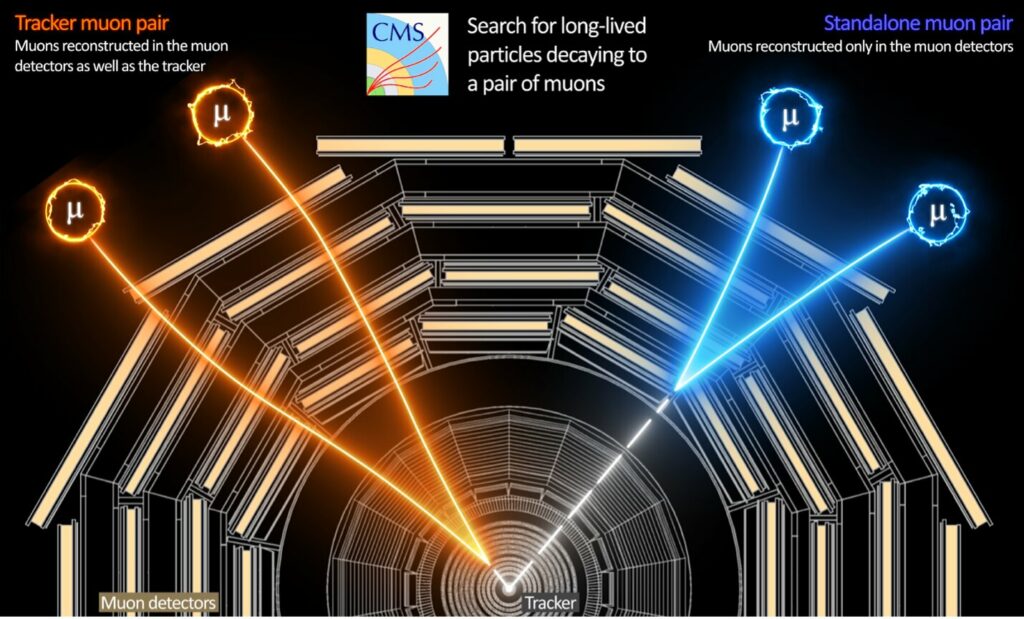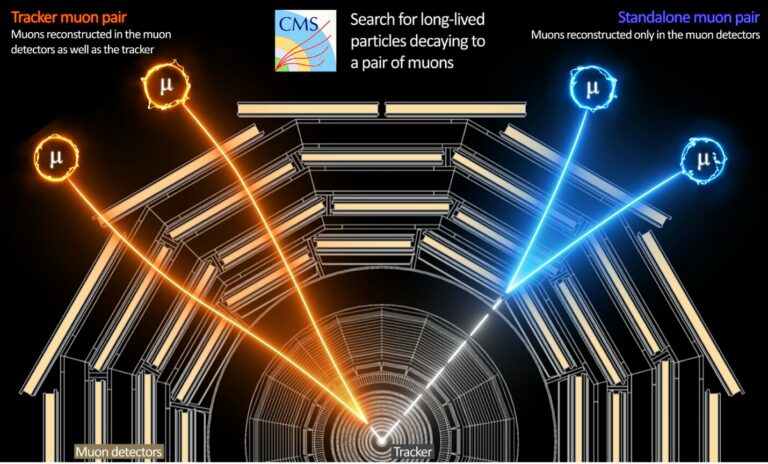Recent Exploration for Novel Exotic Particles at CERN
The CMS experiment has unveiled its inaugural exploration for novel physics using data from Run 3 of the Large Hadron Collider. The study delves into the potential production of “dark photons” during the decay of Higgs bosons within the detector.
Dark photons are characterized as exotic and long-lived particles due to their average lifespan exceeding a tenth of a billionth of a second—a considerably extended duration in the context of particles generated in the LHC. Their exotic nature stems from their deviation from the standard model of particle physics.

While the standard model stands as the foremost theory detailing the fundamental constituents of the universe, numerous unanswered physics questions persist. Consequently, endeavors to explore phenomena beyond the standard model persist. The recent outcome from CMS establishes more refined constraints on the parameters governing the decay of Higgs bosons into dark photons, further delimiting the scope within which physicists can conduct their searches.
In principle, dark photons, before decaying into “displaced muons,” would traverse a discernible distance within the CMS detector. If scientists were to track the trajectories of these muons, they would observe that they do not extend all the way to the collision point. This occurrence arises because the tracks originate from a particle that has already traversed a distance, leaving no discernible trace. Commencing in July 2022, Run 3 of the LHC boasts a higher instantaneous luminosity compared to previous runs.
This heightened luminosity implies an increased frequency of collisions occurring simultaneously, offering researchers a larger dataset to scrutinize. Despite the LHC generating tens of millions of collisions per second, only a fraction can be stored, as recording every collision would rapidly deplete the available data storage capacity.
This underscores the significance of CMS being equipped with a real-time data selection algorithm, known as the trigger, which determines the significance of a given collision. Hence, the potential to unveil evidence of the dark photon is influenced not only by an increased volume of data but also by the meticulous fine-tuning of the trigger system to target specific phenomena. Juliette Alimena from the CMS experiment emphasizes the substantial enhancement in triggering capabilities for displaced muons, allowing for the collection of a significantly greater number of events.
This includes muons displaced from the collision point by distances ranging from a few hundred micrometers to several meters. With these enhancements, CMS is now better positioned to detect dark photons if they indeed exist. The CMS trigger system played a pivotal role in this quest, undergoing refinements between Runs 2 and 3, particularly tailored for the exploration of exotic long-lived particles. Consequently, the collaboration has maximized the efficiency of the LHC, achieving robust results with only a third of the data compared to previous searches.
To achieve this, the CMS team introduced a new algorithm, the non-pointing muon algorithm, refining the trigger system. Even with just four to five months of data from Run 3 in 2022, the improved system recorded more events involving displaced muons than the much larger 2016–18 Run 2 dataset. This expanded coverage of triggers significantly broadens the momentum ranges of detected muons, enabling the team to investigate novel regions where long-lived particles might be concealed. The CMS team remains committed to employing state-of-the-art techniques to scrutinize all data collected during the remaining years of Run 3 operations, with the goal of delving deeper into physics beyond the standard model.
This article is republished from PhysORG under a Creative Commons license. Read the original article.
Do not forget to share your opinion with us to provide you with the best posts !




0 Comments